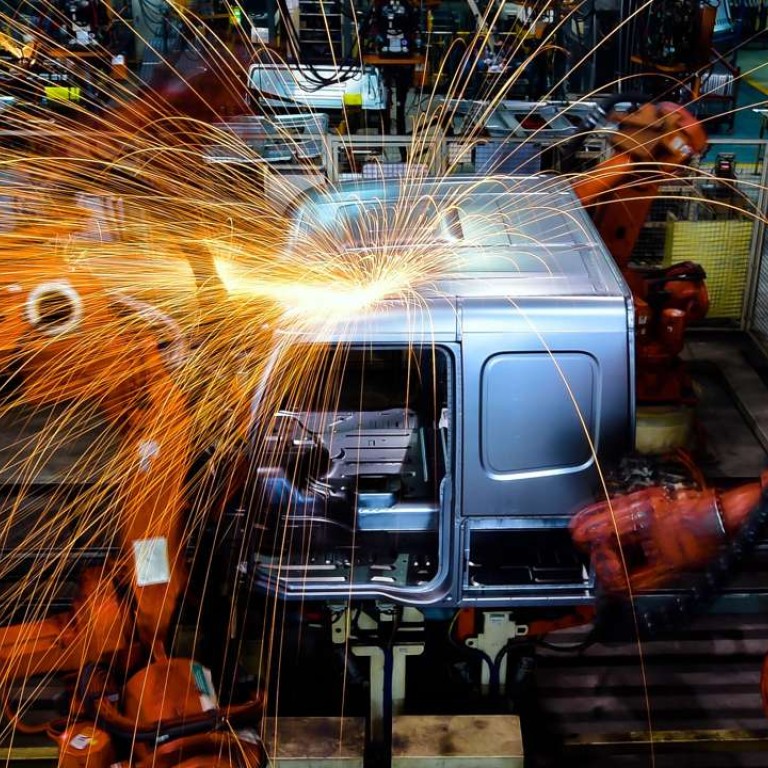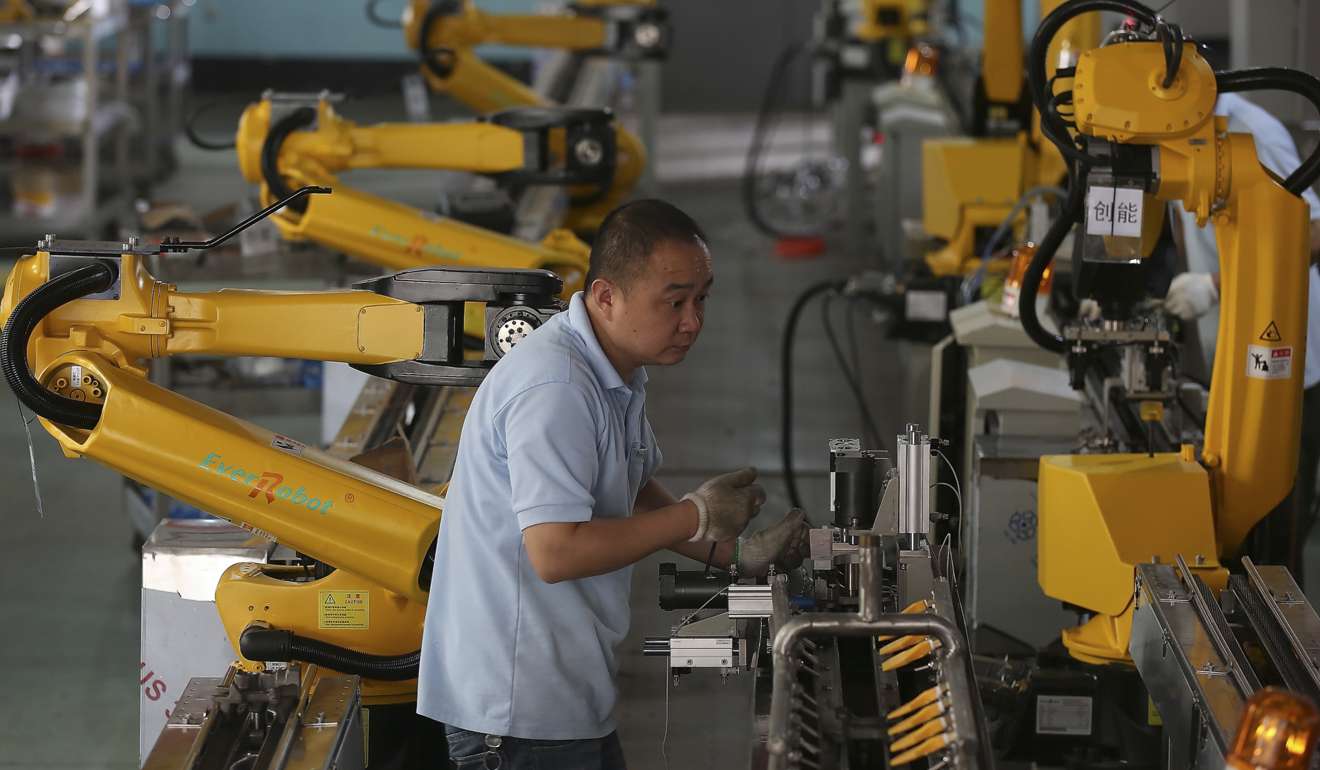
Manufacturing automation to drive China’s robotics spending to US$59b by 2020, says IDC
Annual spending on robotics in mainland China is forecast to continue its rapid expansion and exceed US$59 billion by 2020, as demand ramps up in the country’s manufacturing industry.
The mainland will remain the single largest and fastest-growing robotics market in the world, accounting for more than 30 per cent of global spending during that period, according to a report released Tuesday by technology research firm IDC.
“China continues to lead the growth of worldwide robotics adoption, primarily driven by strong spending growth in process manufacturing and cross-industry applications,” said Zhang Jing Bing, IDC’s research director for worldwide robotics and Asia-Pacific manufacturing.
Robotics expenditure on the mainland is projected to hit US$59.4 billion in 2020, more than double the estimated spending of US$24.6 billion last year. That would make up about half of the Asia-Pacific’s US$133 billion in forecast robotic spending in 2020.
Those numbers are based on robotics spending across 13 industries on the mainland. The categories included are commercial and consumer purchases of drones, robotics systems, and related hardware, software and services.
We are also seeing an accelerated growth in the adoption of commercial service robots, especially for automated material handling
IDC estimated that more than 50 per cent of annual robotics spending on the mainland is for so-called discrete manufacturing, which is the assembly-line production of distinct products like cars and smartphones, and so-called process manufacturing, which is the production of goods in bulk quantities like food, beverages and semiconductors.
“In China, we are also seeing an accelerated growth in the adoption of commercial service robots, especially for automated material handling in factories, warehouses and logistics facilities,” Zhang said.
Services-related robotics spending – encompassing application management, education and training, hardware deployment, systems integration and consulting across various domestic industries – is expected to grow to more than US$15.8 billion in 2020, according to IDC.
The strong market for robotics on the mainland has been reinforced by the central government’s announcement in 2015 of its “Made in China 2025” initiative, which promotes the fast-paced automation of major industries.
“The country aims to become a leader in automation globally,” Joe Gemma, president of the International Federation of Robotics, said in February.

Rising interest in robotics has also fuelled investments in Chinese start-ups which deliver home-grown innovation in the field.
Worldwide investments in robotics start-ups grew to a record 174 deals last year, up from 147 in 2015, according to venture capital database service CB Insights.
In September, home service robot start-up Roobo from Beijing raised US$100 million in funding led by Shenzhen-listed software company iFlytek.
Humanoid robot maker Ubtech, headquartered in Shenzhen, obtained US$100 million in its Series B funding round from CDH Investments, Qiming Venture Partners and Citic Securities.
Drone manufacturer Da-Jiang Innovations Science and Technology, widely known as DJI, raised a US$75 million Series B funding round in 2015 from US venture capital firm Accel. That helped raise DJI’s valuation to about US$10 billion.
While Shenzhen-based DJI builds popular consumer drones like the Mavic and Phantom, it also makes drones for industrial applications like the Matrice series, CB Insights said.

